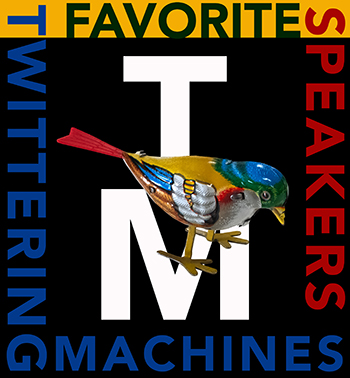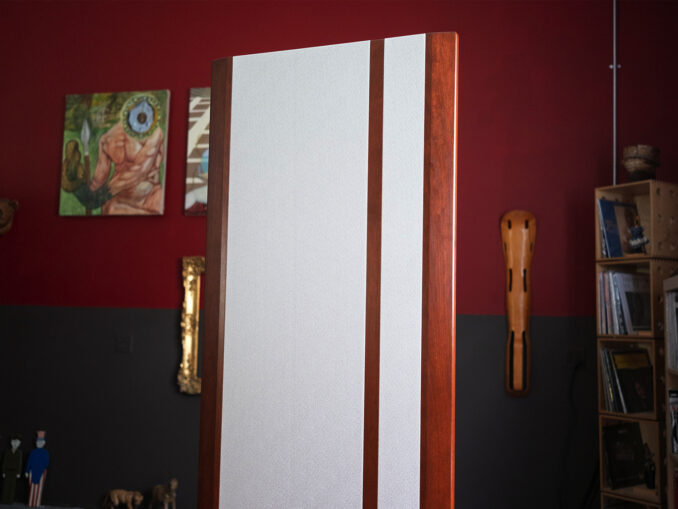
The Magnepan 20.7x are the first pair of Maggies in Barn and perhaps more than most, their unique qualities and standout strengths challenged my abilities to describe their sound in words. While I love a good challenge, I enjoyed experiencing music Maggie-style even more.
I was talking to a friend sometime early on in the review period who asked, “So what do you think of the Maggies?”
“Ha! I’ve been thinking about how to describe their sound and haven’t come up with anything yet. Of course the presentation is different, like—‘Wait! Where’s that sound coming from? And how is it getting inside me?’—it’s as if I’m taking the music in through my skin!”
Sometimes a casual conversation helps cut through the verbiage better than caffeine.
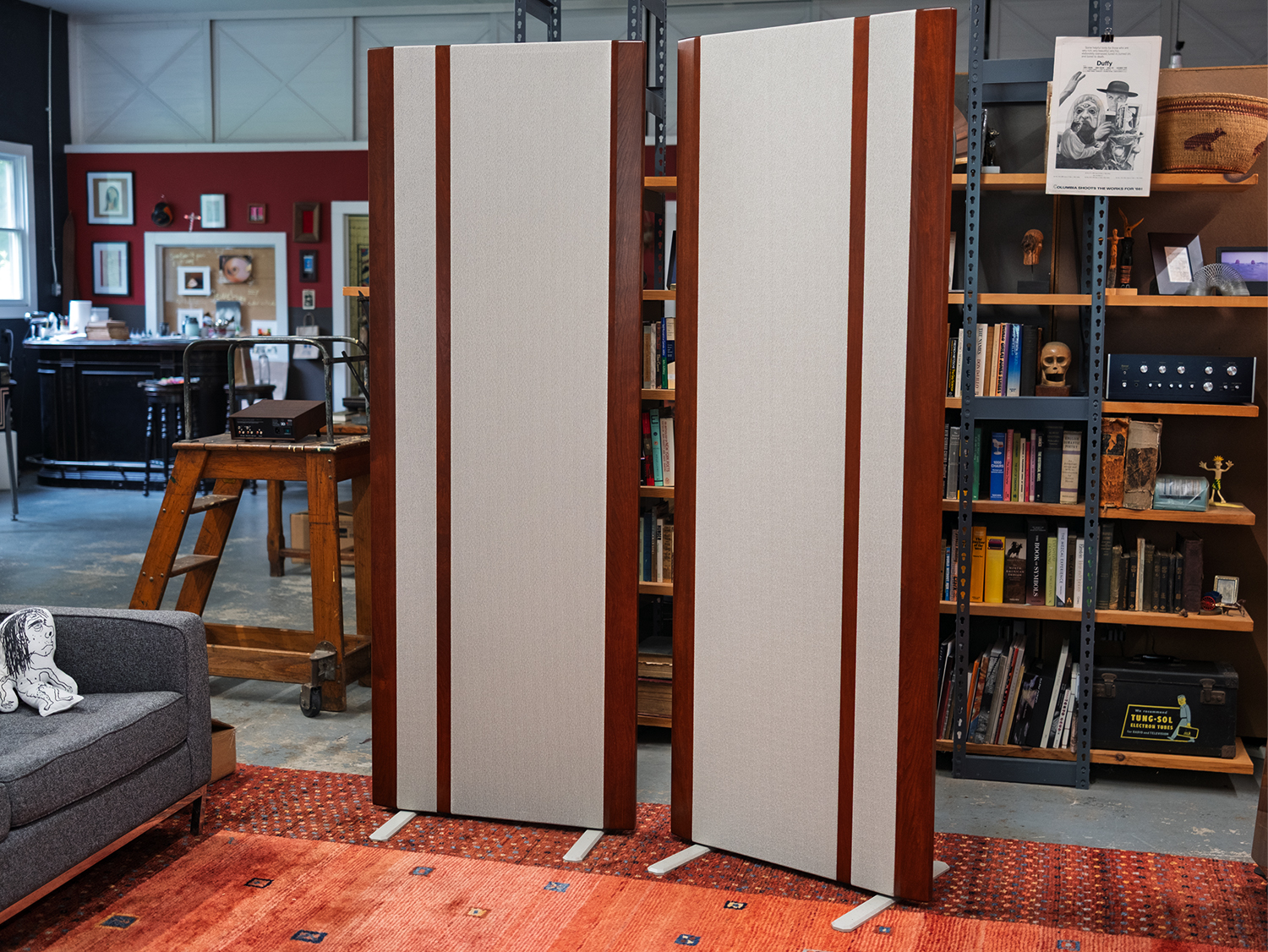
Here’s a trick—when listening to the hifi, especially at hifi shows, I like to open and close my eyes to see if there’s a sonic difference between with and without sight. My experience says that with some systems there is and with others there isn’t and my best guess when it comes to explaining why this is the case has to do with a loudspeaker’s power response, or its ability to project sound on- and off-axis at all frequencies, in all directions. The better the power response, the less difference between sighted and eyes-closed listening. Again, this is just a theory but the Magnepan 20.7x’s presentation remains exactly the same either way, eyes open or closed.
Music also sounds about the same whether sitting or standing—maybe if I was taller than the Maggies they’d sound different when I stood up but I’m not—even when moving around in front of them. It’s as if the performance is taking place—right there! This kind of permanent placement of the presentation is, at least in my experience, rather uncommon and I consider this quality to be among one of the many 20.7x’s strengths. Music occupies its own space within your place. Nice.
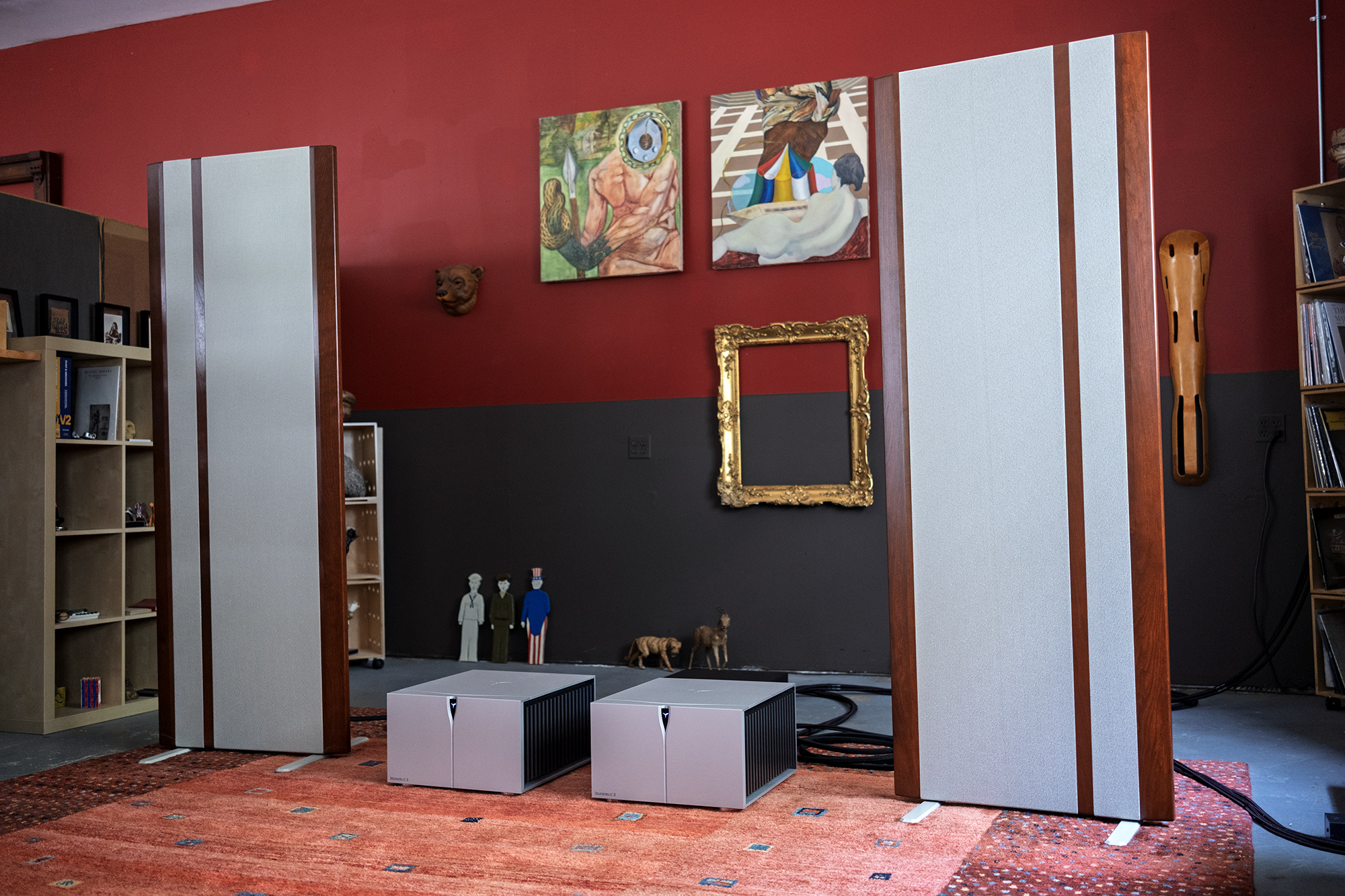
In terms of setup, the Maggies took a bit of time and movement before I felt as if they were ‘locked in’ to the Barn’s A-Side. Seeing as Maggies are dipoles, which generally project sound in equal force from their front and back, the distance to the front wall is critical when it comes to what we hear at the listening seat. My initial thinking was to have the 20.7x well out into the A-Side but over time I ended up with them living about 7 ft from the front wall which is where their ‘power response’ seemed more fully realized. Locked in. Prior to this lock in, music sounded a bit confused in terms of my ability to localize sounds within the overall sound image. A tad messy. I did try the 20.7x with their tweeters on the inside but preferred ’em outside for the more expansive sound that with the right toe-in didn’t give up any upper frequency niceness.
If you want a further peek into my process, I spend a lot of time setting up speakers in Barn over the course of days and weeks depending on the specific speaker in play. With the Maggies, I finally got them dialed in after a few weeks and a late night listening session with the lights down low, nearly off. This in-the-dark speaker setup is typically where I make final adjustments probably because I’m easily distracted by what I see. Once perfectly placed, I then turn the lights on or wait until the next day to measure and make sure both speakers are the exact same distance from walls and books.
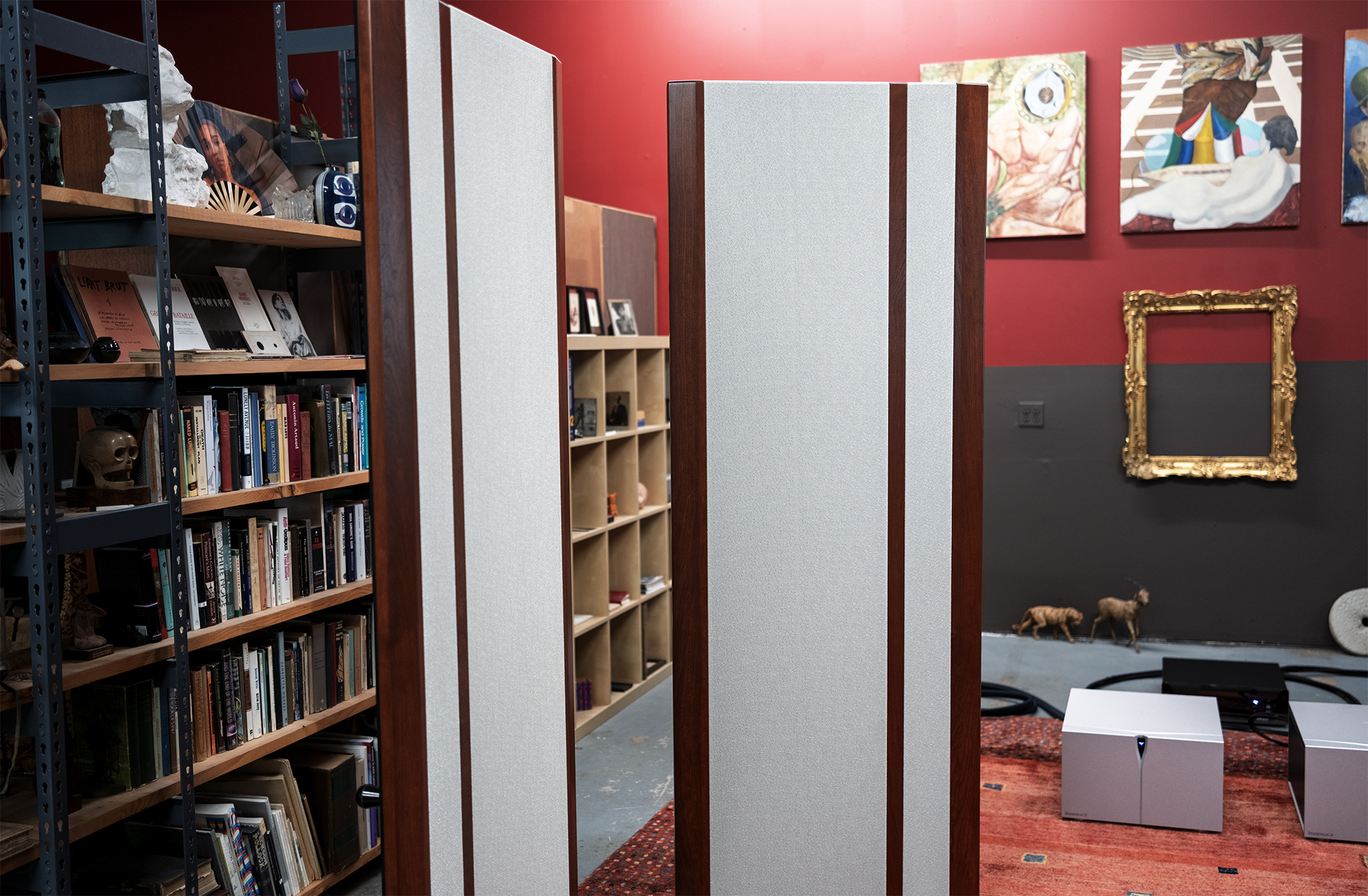
The Magnepan 20.7x stand 79” tall, measure 29” across and about 2” deep making them look like kinda big doors, at least to me. The review pair are covered in the off-white Classic cloth with real Dark Cherry wood vertical accents and I opted for the off white metal stands. I recommend a visit to the Magnepan website for anyone interested in learning more about their line of speakers that start at $1295/pair, the numerous finish options available, and the company’s long and storied hifi history.
In brief, Jim Winey invented the Magneplanar loudspeaker in 1969, the same year he founded Magnepan in White Bear Lake, MN. It’s no exaggeration to suggest that Magnepan is one of our most loved hifi brands with a real history of making great planar speakers, or just great speakers, at great prices.
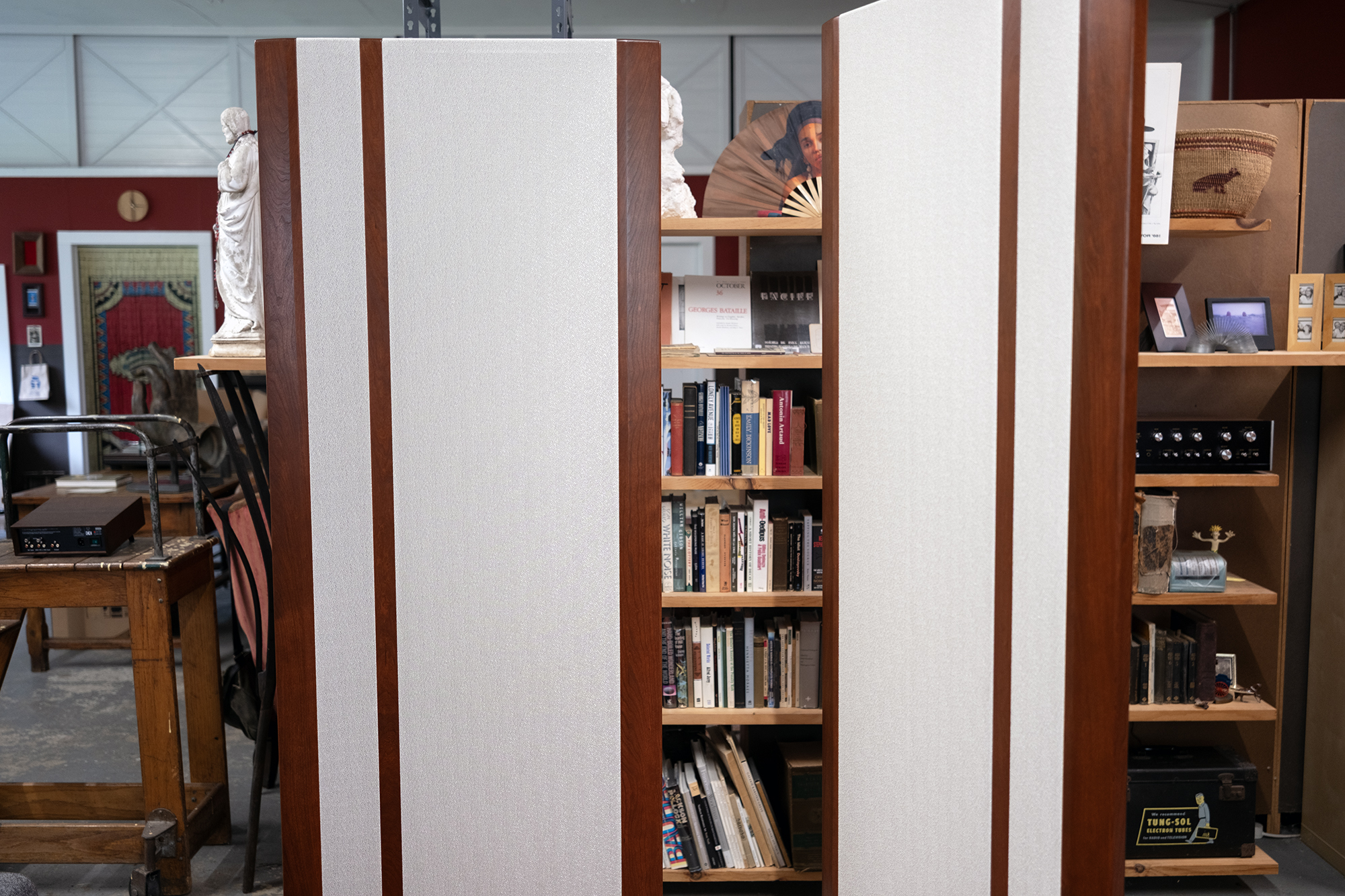
The Magnepan 20.7x are a 3-way planar dipole loudspeaker using a Magneplanar true ribbon tweeter, an ultra-thin aluminum foil about 1/10th the thickness of a human hair—that’s really thin even if you have really thick hair—mated to quasi-ribbon midrange and bass panels which operate in push/pull thanks to magnets on either side of each panel. The 20.7x stand about 6.5′ tall, which is tall even if you’re tall. Frequency response is rated at 25-40 kHz with a 4 Ohm impedance and 86dB sensitivity (500Hz /2.83v). The review pair are the upgraded “x” version.

What’ makes an x and x? In brief, better capacitors, better coils (inductors), better wiring, better connections, and better inputs.
From Magnepan:
The general idea of the X series is to take the existing design of a given speaker and improve it using three primary axis of refinement: simplification, component betterment, and balancing. When it comes to high fidelity audio reproduction, less is definitely more. Simplifying a circuit in terms of fewer components, less overall wire, fewer junctions, less mass, etc. reduces signal loss, degradation, and distortion. This allows for a more pure signal to pass through the circuit and be reproduced with precision and fidelity. Almost one-for-one replacing all of the components between the speaker cables and driver with superior ones has an obvious beneficial effect.
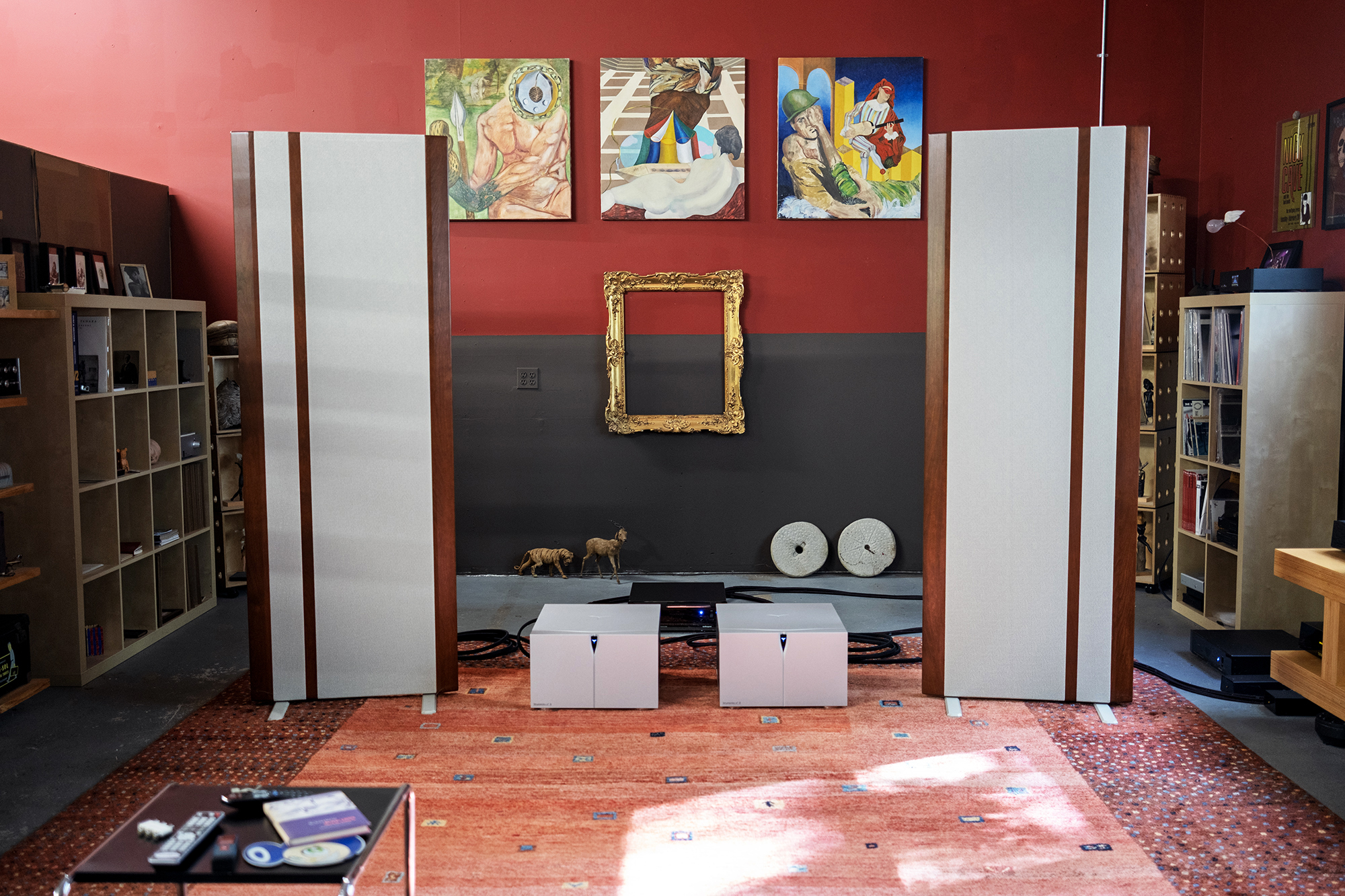
During their entire 2-month+ Barn stay, the 20.7x were powered by the review Audia Flight Strumento Series N°1 evo Stereo Preamplifier and N°8 Monoblock Power Amplifiers (more info) with either the Barn resident Grimm MU1 (review) or totaldac d1-streamer-live (more info) paired with the Barn resident totaldac d1-unity (review). All cabling is from AudioQuest (see full Barn and system details). I intentionally timed the Maggies Barn time to coincide with the big Audia Flight stack because I know from experience Maggies work very well with the Audia Flight gear.

That’s from Capital Audiofest 2023 and the integrated amp in charge of the Magnepan MG2.7x speakers was the Audia Flight FLS 10 (review) I reviewed (and fell for hard). Here’s what I had to say about this room which was among my favorites of the show:
In another fortuitous twist of fate, Fidelity Imports and the Audia Flight FLS 10 integrated amp I reviewed and loved teamed up with Magnepan and their new MG2.7x speakers. The FLS 10 was fed by an Aurender A15 and this system nearly blew the pocket doors off the place with crazy, beautiful music power. Do you remember how amazed I was with the FLS 10’s bass response? I was amazed, again, at this system’s deep, powerful growl. Nice!
The Strumento N°8 Monoblocks deliver 500/1000/2000 Watts of output power into 8/4/2 Ohm loads respectively and another thing I know is Maggies like oomph and the N°8 Monoblocks are limitless oomph generators.
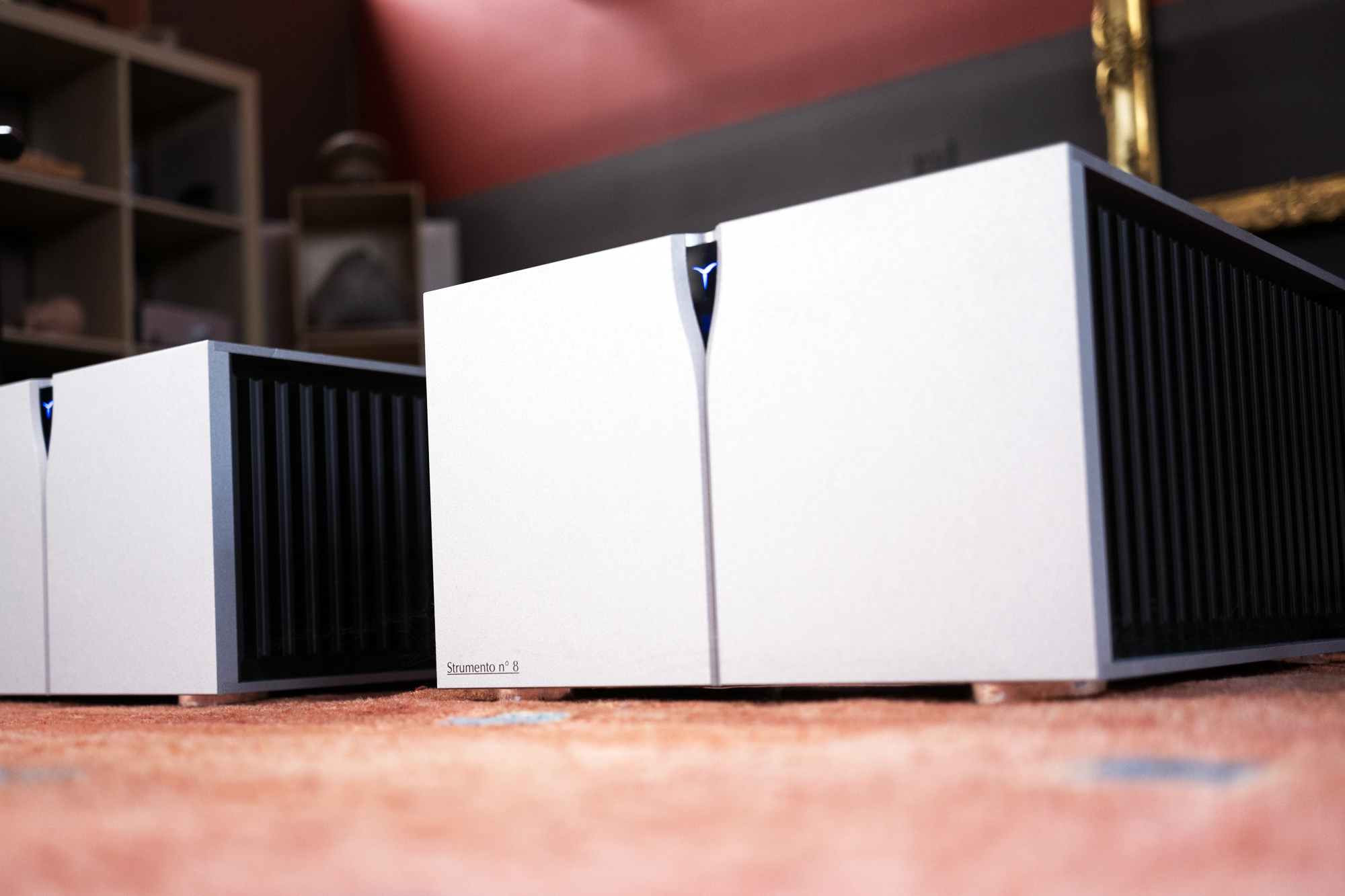
Right off the bat I can tell you that the Maggies get tone right and they love, love, reproducing the sounds of things, the unique voices of things, as much as I enjoy hearing them. But that’s just half the story because the Maggies also portray these sounds of things in space with as deft a touch as I’ve heard from any speaker, so quick and unrestrained the word “touch” seems nearly too blunt. Perhaps “breath” is better. This delightfully delicate touch makes music feel nearly atomized in space like some great big energy force field that one could walk through (to the other side).
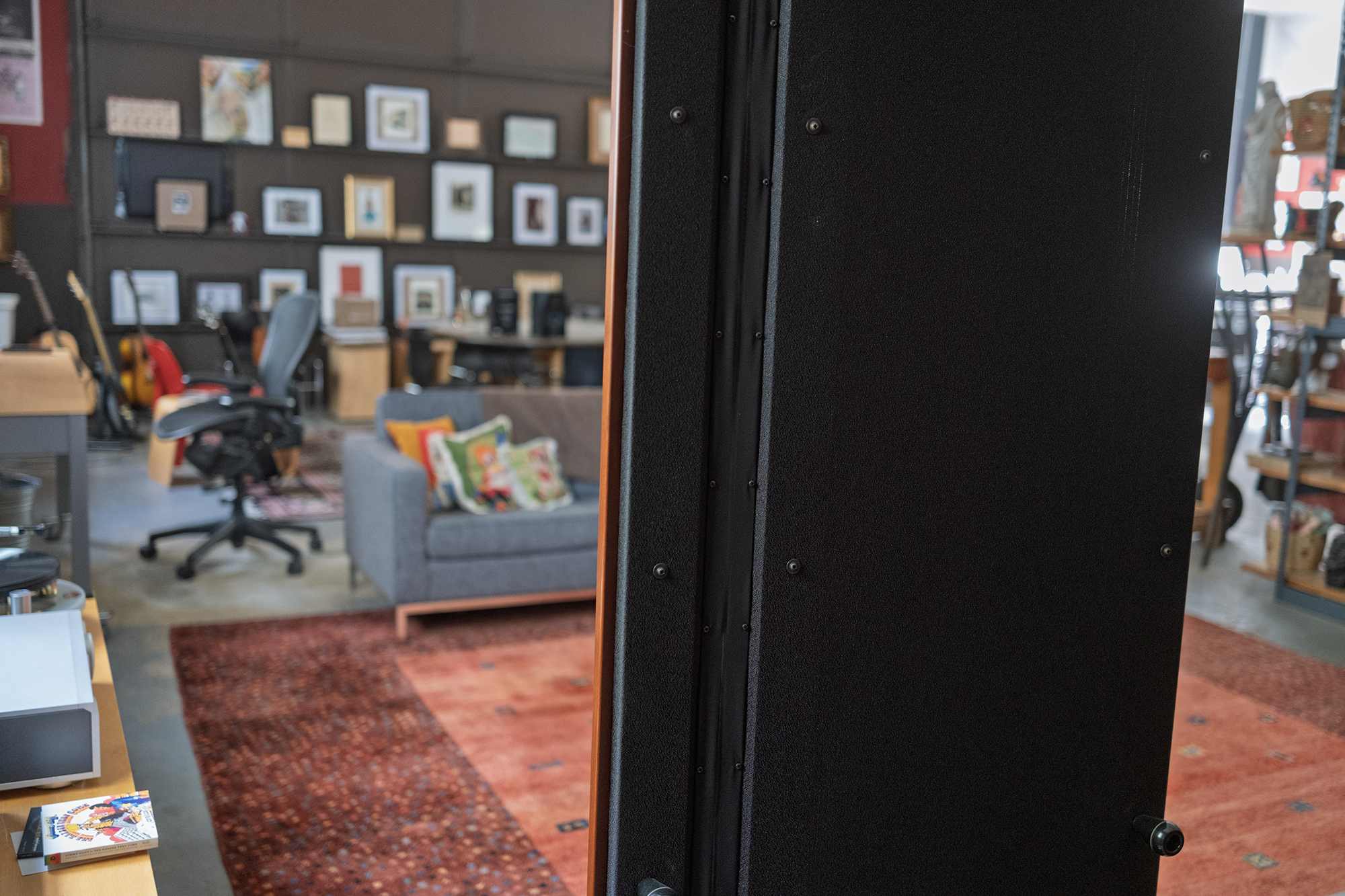
Which is not to say the Maggies lack impact because they don’t. It’s just that their overall presentation lacks the kind of forceful directed energy of a horn-loaded loudspeaker or a large dynamic loudspeaker like the fairly recently reviewed YG Acoustics Sonja 3.3 (review) where their physicality can nearly feel confrontational. And I don’t use that word lightly, confrontational, and some people love and live for a large horn speakers punchy presence or a big dynamic speaker’s air-pulsing excursions. But, turn the Maggies up and up again and they have no problem bringing home the big boogie.
Aldous Harding’s Party from 2017 is a great place to begin talking about Maggies and music as Harding digs deep into sounds, subtle movements, and subtle shifts in time and timing with an overall oddness that I find endearing and a bit scary. I had the opportunity to see Harding live back in 2019 in Chicago, coinciding with Axpona, and I can tell you that she’s even more animated in person “…it’s the beat that appears to get things moving, beginning with her body, after which, within seconds, her face begins to take the form of the mood of the upcoming lyrics as if words have shapes. It’s like watching a gymnastic ballet dancer opera singer ventriloquist warm up. Only better.”

As “Imagining My Man” wound up through the Maggies with that Harding tension between beat and voice, I couldn’t help but feel as if those big panels and my ear drums were moving in unison, as if they were cut from the same cloth so to speak. Sounds unfolded in space, projecting from way back and all around with the various instruments including saxophone and bass clarinet sounding out in full voice.
The title track is a favorite ‘test track’ and it builds from guitar and voice, adding piano, backing vocals and bass clarinet as the song unfolds. When the layered vocals of the chorus kick in, the Maggies really showed off their skill at unfolding this kind of complexity with astounding ease and fluidity. I’ve heard many a speaker mash these layered vocals up into a nearly indecipherable ball of voice, a blunt blow compared to the Maggies careful and skillful clarity.
The Maggies also move with the best of ‘em, reacting to subtle shifts in tone and timing with effortless speed and delicacy which I’ll also attribute to the requisite skills offered by the Audia Flight monoblocks that combine raw power and grace to a striking degree. All of these attributes add up to a presentation that feels as close to sitting in front of a performance as I’ve heard from any speaker. Stunning.
Why not. Led Zeppelin was one band whose later albums I enjoyed as they were released compared to my usual fare of Hendrix, early Dylan, and The Doors, music that came out years before I found it back in ye olden days. Led Zeppelin III from 1970 has a jammy feel, a looser and more relaxed Zeppelin while still embodying the full force of one helluva Rock ’n Roll band. Over time, and we’re talking about 50 or so years-worth of time, “Since I’ve Been Loving You” has moved on my “Fun” playlist where I keep an ever growing number of ‘test tracks’ like “Party”.
Bonham right, Page left, and John Paul Jones smack dab in the middle kick things off and lay the foundation for Plant to plant himself center stage out front. The pop! of Bonham’s kit leapt out into the Barn with the initial thwack and decay of the real thing, Page’s guitar strings sting as they should, Jones bass is laid out with precision and full deep voice as easy to follow as Hansel and Gretel’s breadcrumb trail, and Plant’s best blues-rock forceful falsetto but Jimmy Page is the real star of this show once his solo moves to the fore taking center stage. I’ve never owned a Les Paul but I can hear why I’d want to with that fat rich sound, making a single note from a single string sound like a chorus of angels or devils.
The Maggies playing into the 90dB range offered up a truly thrilling rendition of Zeppelin in all their glory and back in their heyday Zeppelin had, no matter what you think of their music, a heavy helping of glory. What a band. What a speaker. I bet it gets tiring for makers of panel speakers like the Maggie 20.7x to have to remind some people they play Zeppelin (loud) without apology.
New York City’s Geese’s latest Getting Killed, released on Partisan Records earlier this month, has a heavy helping of mayhem and funk (and post-punk) mixed in with acoustic folky numbers, heavier metal, and bedlam. Yes, mayhem and bedlam adding up to one badass record that gets better over time and repeats. In terms of sheer unexpected scope and abandon I’m reminded of Trout Mask Replica but funkier.
Geese’s lineup is traditional rock with Cameron Winter (lead vocals, keyboards, guitar), Emily Green (guitar), Dominic DiGesu (bass), and Max Bassin (drums) joined on some tracks by Nick Lee on trombone and Aaron Paris on violin but this isn’t your typical rock and roll as the band plays with melody, time, and tempo with abandon sounding like a free jazz cover of Exile on Mainstreet. All to say, this isn’t your grandfather’s rock album and the Maggies love this wild mix of sounds and styles and funk as much as I do.
Keeping pace, keeping time with drummer Max Bessin is a listener’s delight and the 20.7x have the speed, dynamics, and dexterity to keep up with ease and when things get really funked up, like on “100 Horses”, the band, the music, and this system delivered an in Barn performance to such an engrossing degree I nearly felt as if I should have bought a ticket. All to say the Maggies kept pace with this funky stuff and every other kind of beat I threw at ‘em, turning reproduction into performance right there in front of me.
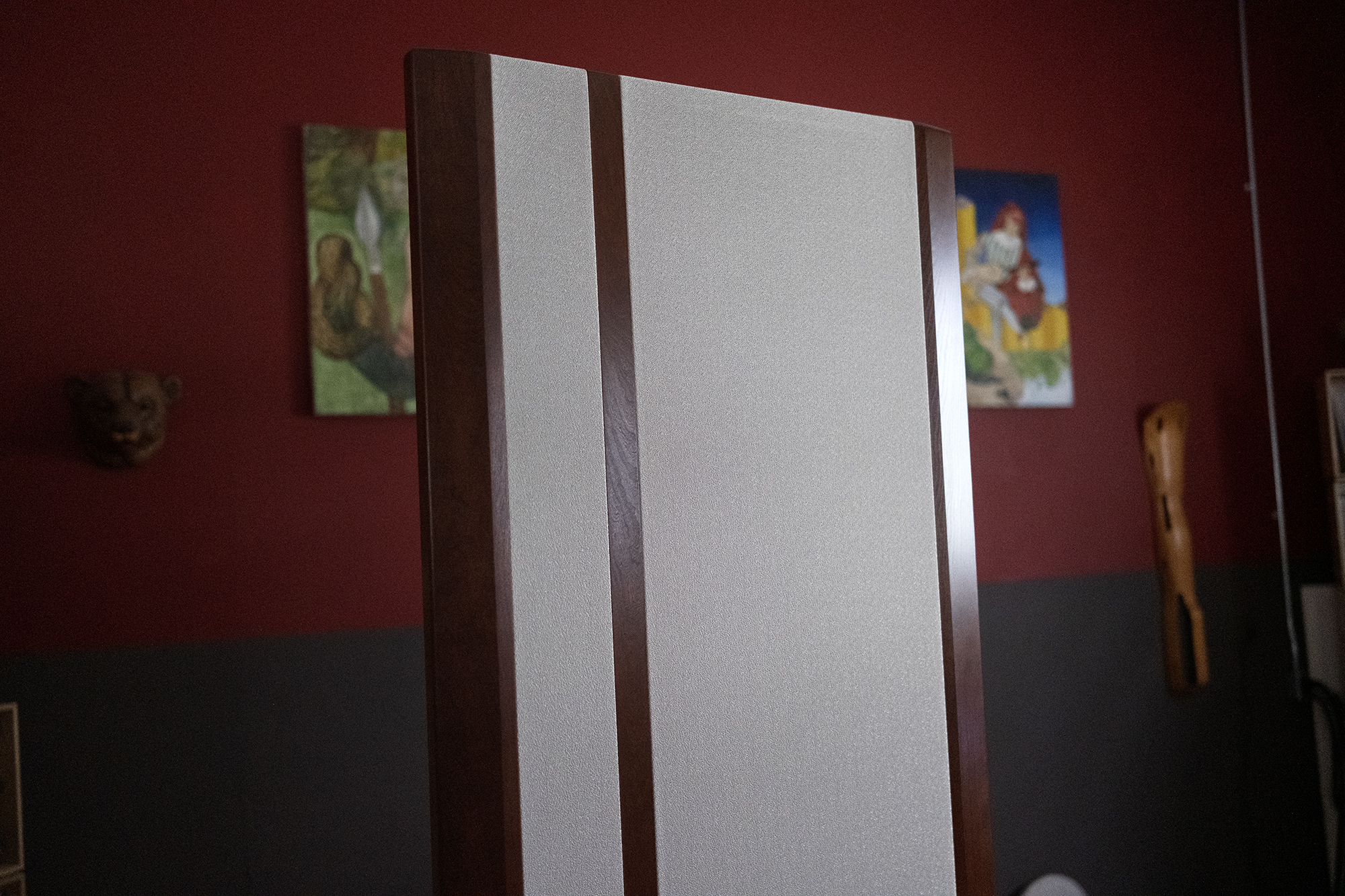
Context is everything when it comes to comparisons, which to my mind means a more meaningful comparison to make with the Maggies would have been with another similarly priced panel speaker but this wasn’t in the cards as timing review gear’s arrival and departure can take months or longer. With that being said, the recently reviewed DeVore Fidelity O/Bronze (review) lived on the Barn’s B-Side during the Maggies entire time on the A-Side so a back and forth was inevitable. In addition, the Maggies slid into the same place the also recently reviewed Ø Audi Verdande (review) vacated and if you tried to find three loudspeakers with greater differences in approach, good luck.
The DeVore O/Bronze and the 20.7x cost the same—$30,000/pair—making for at least a sensible comparison price-wise and in some ways sound-wise as well. By that I mean the O/Bronze also create a huge sound image well separate and apart from themselves, something the big Maggie’s do as well as any loudspeaker I’ve had in Barn. Within that sound image is where things diverge as the Maggies sound comparatively less specific when it comes to placing sonic elements within that space sounding a bit diffuse when compared to the O/Bronze’s pinpoint localization.
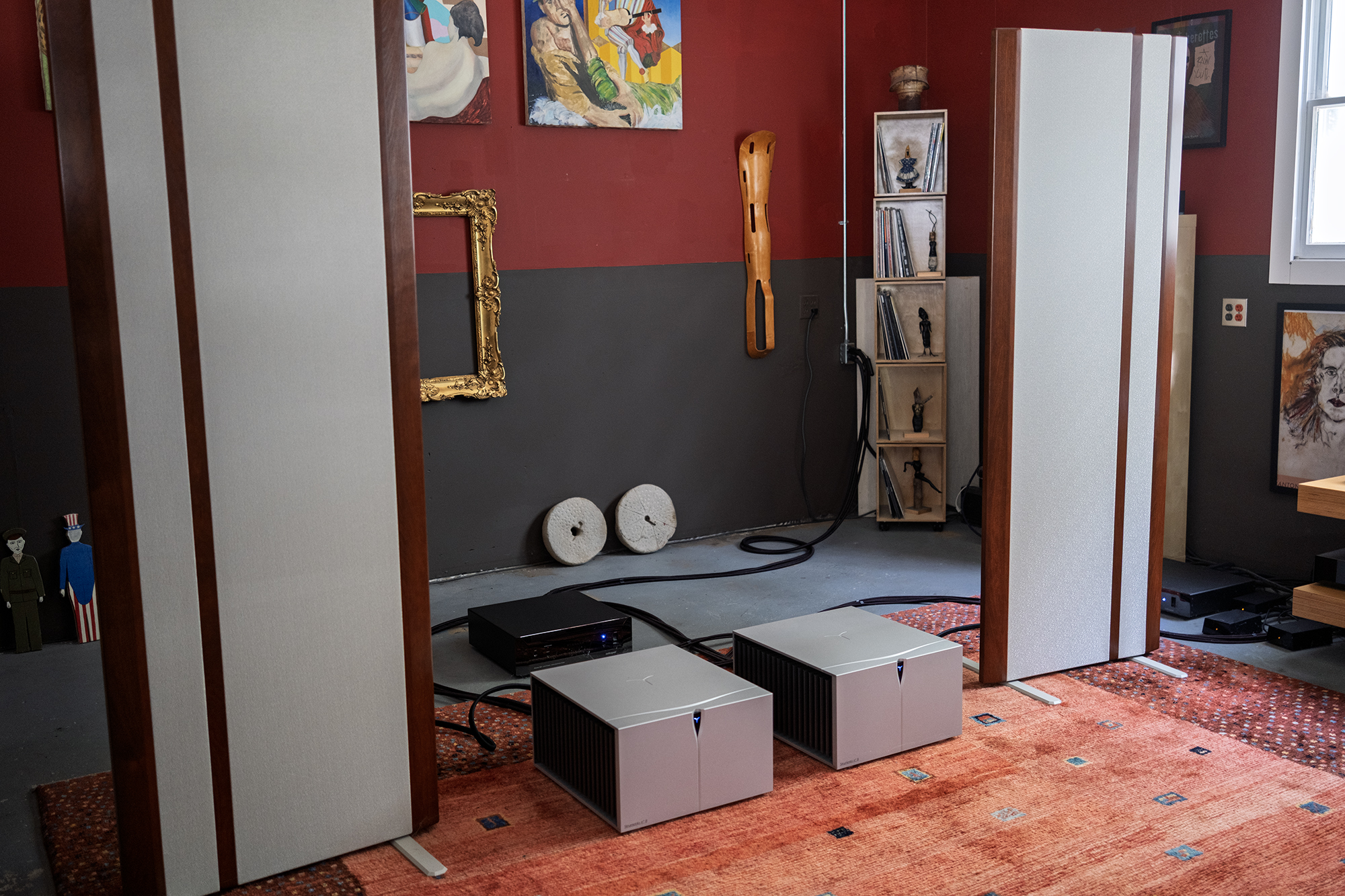
But these observations fail to get to the heart of the differences between these two wonderful loudspeakers, mainly because I can fall into the trap of presenting comparisons as competition even though hifi is not a competitive sport and there are no winners and losers when it comes to the enjoyment of music. As opposed to some, I prefer to celebrate difference and recognize that my tastes and preferences are not rules others must follow. Here’s a question I pose to any of the hifi boy’s club competitors who seem to enjoy arguing more than music—what’s the worst thing that happens to people who enjoy listening to their hifi even though it doesn’t live up to some arbitrary measure? If anyone needs help finding the obvious answer I’m here to help—they continue to enjoy listening to music which is the ultimate goal of this wonderful hobby. Nothing more, nothing less.
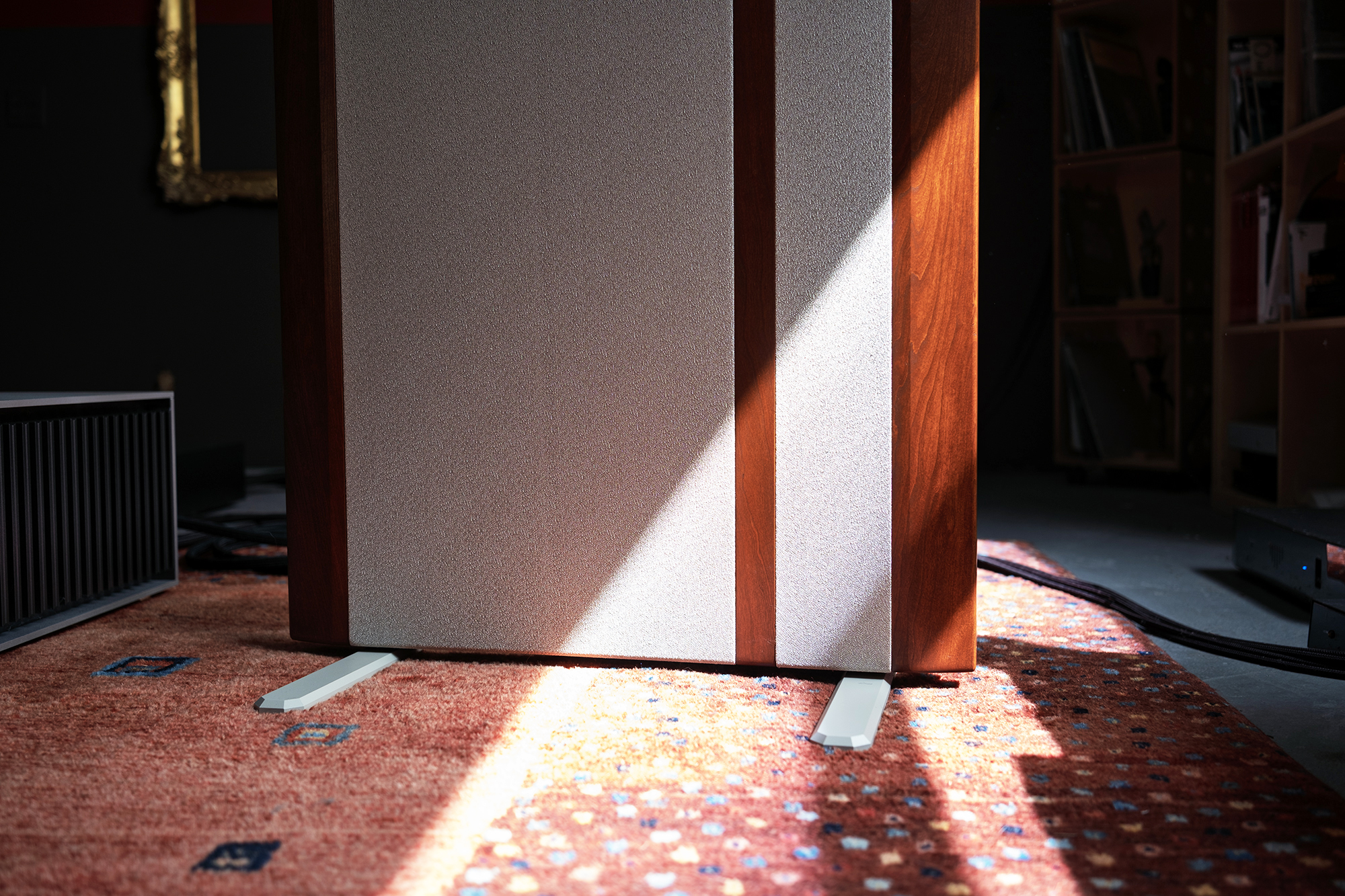
To get more to the heart of what separates the 20.7x from the O/Bronze, we get back to that notion of touch, or how a speaker presents sound in room. As I said in the opening paragraphs, the 20.7x present music with an almost uncannily deft touch that nonetheless offers realistic dynamic slam and bass especially as the volume level rises. The O/Bronze are more tightly focused overall and they are also dynamic champs with ample bass for my tastes that all come together seamlessly even at low volumes (with low power). Volume and performance really comes into focus with bass response as I felt the Maggies bass got better the louder the volume whereas the DeVore’s bass comes alive pretty much just above a whisper.
But this isn’t the end of that comparison story, it’s the beginning because these differences lead to different music-centric experiences. To my way of hearing, the Maggies presentation places music in-room out in front of the listener in a very captivating way. A kind of invitation, a door into the experience whereas the O/Bronze have the ability to make music feel as if it’s being recreated inside the listener, a kind of intimacy that dissolves the music / listener separation. Which presentation is preferable comes down to the listener and their tastes not only in music but of greater importance in the interaction with it. I found the Maggie’s to be less visceral than the DeVore’s or to put in it another way I found the DeVore’s to be less cerebral than the Maggies.
While I’ve written about Fritz Hauser’s stunning solo live record Solodrumming a number of times, I picked it out once again to highlight another standout Maggie quality, and that’s their ability to make sounds sound as if they’re coming from all over the place, literally well behind, way off to the sides, well above, and all around the Barn like some kind of magic trick with lots of hats and musical rabbits spread out all around the Barn. I spent review time years ago with the BACCH4Mac “True 3D imaging for 2-channel audiophile systems” so I know what true 3D sound can do and while the Maggies don’t wrap around to that Bacch 3D extreme, their dimensionality is more than enough for me.
An important, I’d say critical, aspect of believably reproducing sounds scattered all over the place is scale and the Maggies do scale as well as any speaker I’ve heard. Starting from presenting realistically-sized renditions of each sonic element, nothing is larger or smaller than life, the 20.7x portray the relative size of every element with a real world rightness that translates into an easily believable accounting of whatever music you send their way—a huge wide open doorway leading directly to the performance seemingly unfolding right there in front of you.
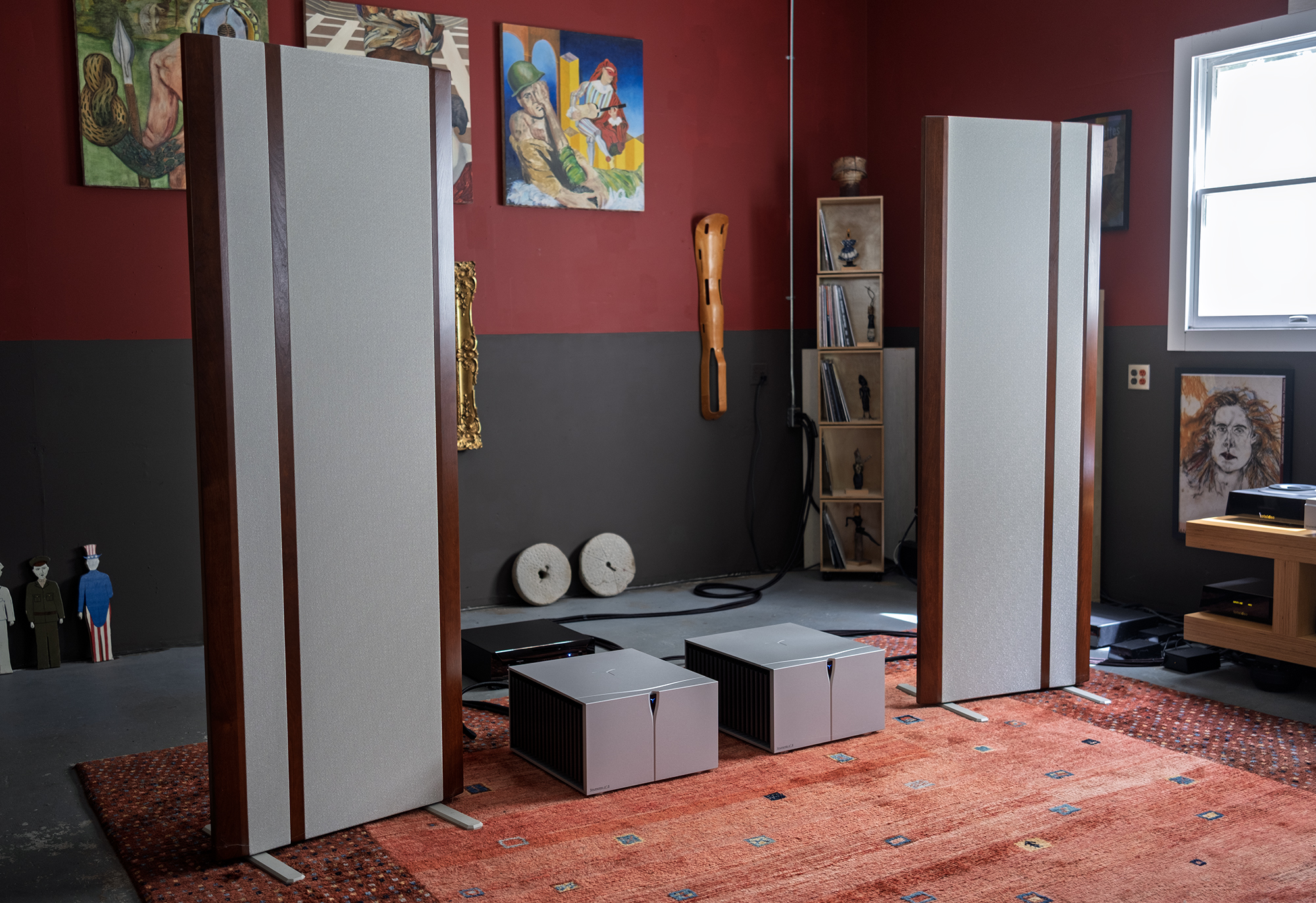
The Magnepan 20.7x are the first pair of Maggies I’ve had the pleasure of hosting in Barn and they stretched my expectations when it comes to loudspeaker performance and challenged my way with words to adequately describe their sound. I hope I’ve done them justice, at least enough to let you know they have a set of truly remarkable and unique skills that serve to bring the performance right there in front of you in your home with as deft a touch as I’ve heard, blurring the sonic lines between reproduction and music-making. Bravo!
Magnepan 20.7x Loudspeaker
Price: $30,000/pair
Company Website: Magnepan
20.7 Specifications
Description: 3-Way /True Ribbon Tweeter – Quasi-Ribbon Midrange and Bass
Frequency Response: 25-40 kHz
Sensitivity: 86dB/500Hz /2.83v
Impedance: 4 Ohm
Dimensions: 29 x 79 x 2.062″

